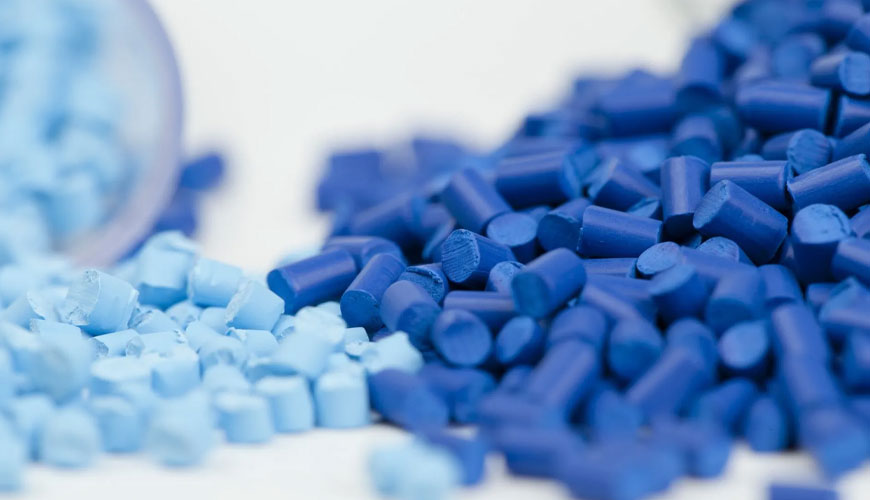

EUROLAB laboratory provides testing and compliance services within the scope of EN ISO 15512 test standard. This standard specifies methods for determining the water content of plastics in the form of powders, granules and finished products. These methods do not test the water absorption (kinetic and equilibrium) of plastics as measured by ISO 62.

Six alternative methods are specified in this standard:
Method A is an extraction method using anhydrous methanol followed by Karl Fischer titration of the extracted water. It can be used for all plastics and can be applied to granules smaller than 4 mm × 4 mm × 3 mm. The method can also be used for prepolymer materials, for example in the form of a powder insoluble in methanol.
Method B1 is an evaporation method using a tube furnace. The water contained in the test section is evaporated and carried into the titration cell with a dry air or nitrogen carrier gas, followed by a Karl Fischer titration or a coulometric determination of the collected water by means of a humidity sensor. It can be used for all plastics and can be applied to granules smaller than 4 mm × 4 mm × 3 mm.
Method B2 is an evaporation method using a heated sample bottle. The water in the test section is evaporated and carried to the titration cell with dry air or nitrogen carrier gas, followed by Karl Fischer titration of the collected water. It can be used for all plastics and can be applied to granules smaller than 4 mm × 4 mm × 3 mm.
Method C is a manometric method. The water content is determined from the increase in pressure that results in the evaporation of water under a vacuum. This method is not applicable to plastic samples containing volatile compounds other than water in quantities that contribute significantly to the vapor pressure at room temperature. Checks for the presence of large quantities of volatile compounds will be made periodically, for example by gas chromatography. Such checks are especially necessary for new material types or classes.
Method D is a thermoculometric method that uses a diphosphorus pentoxide (P2O5) cell for the detection of evaporated water. The water in the test section is evaporated and carried to the sensor cell with a dry air or nitrogen carrier gas, then the coulometric determination of the collected water is made. This method is not applicable to plastic samples containing volatile compounds other than water in quantities that contribute significantly to the vapor pressure at room temperature. This particularly concerns volatile components that can react with the acidic coating of the diphosphorus pentoxide sensor, for example ammonia or any type of amine. Checks should be made periodically for the presence of large quantities of volatile compounds. Such checks are especially necessary for new material types or classes.
Method E is a calcium hydride-based method. The water content of a sample evaporates due to the combination of vacuum and heating. Evaporating water reacts with calcium hydride with molecular hydrogen and calcium hydroxide. Hydrogen causes a pressure increase in vacuum in proportion to the evaporated water.
EUROLAB assists manufacturers with EN ISO 15512 test compliance. Our test experts, with their professional working mission and principles, provide you, our manufacturers and suppliers, the best service and controlled testing process in our laboratories. Thanks to these services, businesses receive more effective, high-performance and quality testing services and provide safe, fast and uninterrupted service to their customers.
To get an appointment, to get more detailed information or to request an evaluation, you can ask us to fill in our form and reach you.